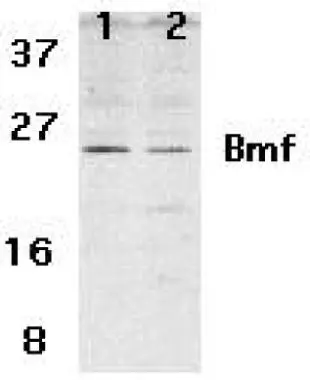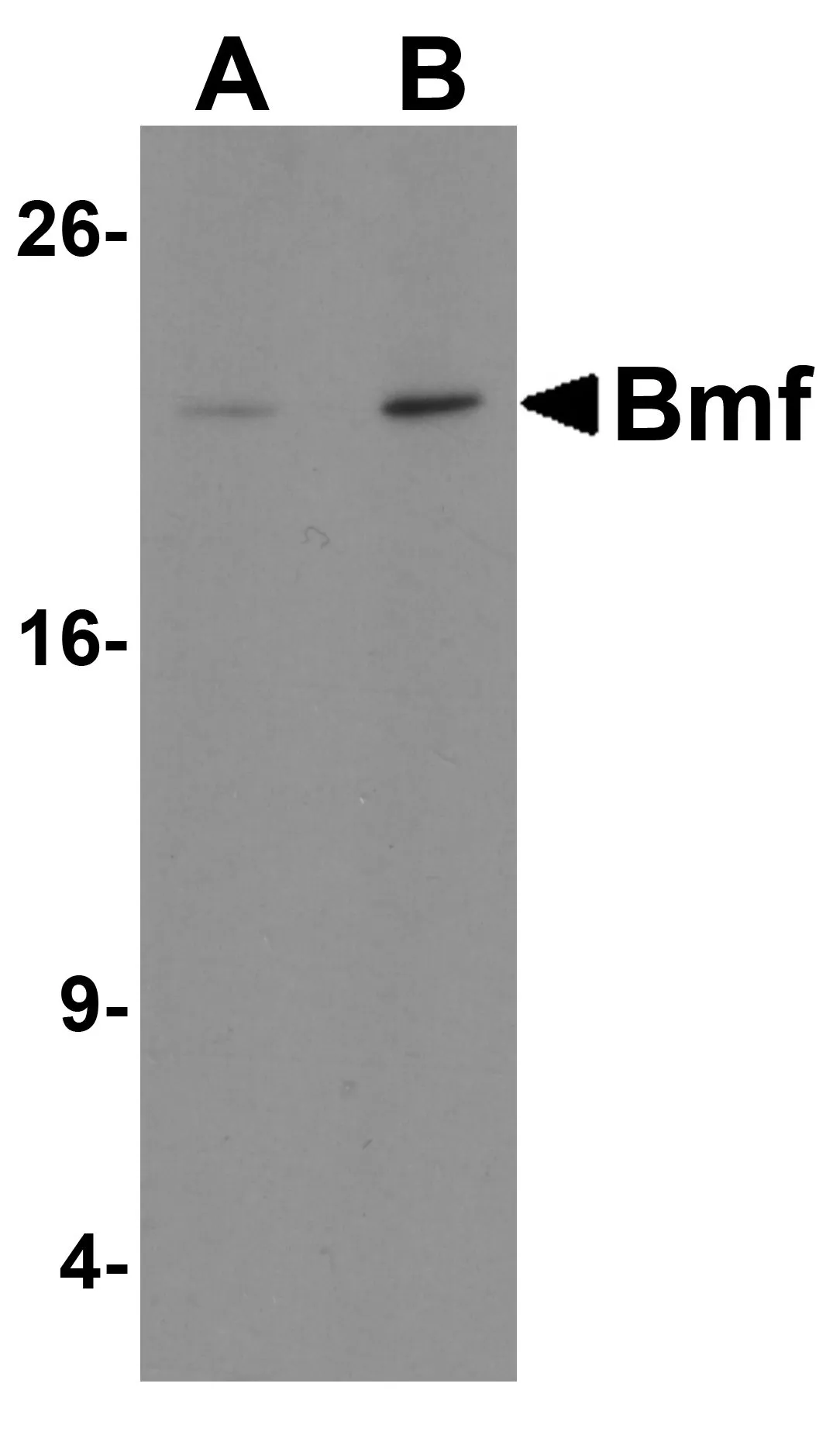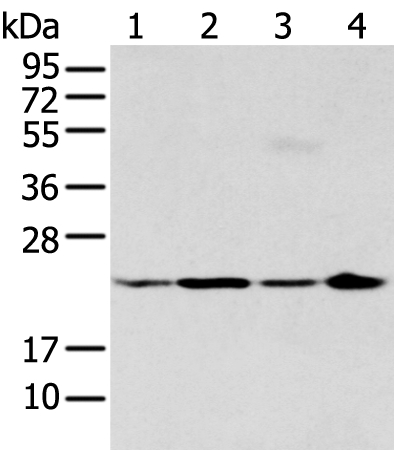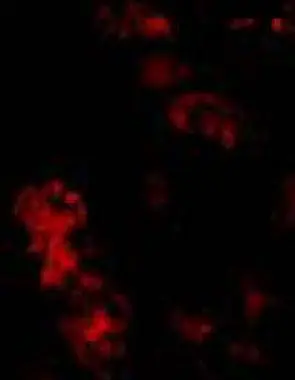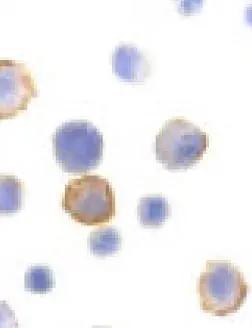
Immunocytochemical staining of Bmf in HeLa cells with Bmf antibody (GTX29655)at 10microg/ml.
BMF antibody
GTX29655
ApplicationsImmunoFluorescence, Western Blot, ELISA, ImmunoCytoChemistry
Product group Antibodies
TargetBMF
Overview
- SupplierGeneTex
- Product NameBMF antibody
- Delivery Days Customer9
- Application Supplier NoteWB: 2microg/ml. ICC/IF: 10microg/ml. *Optimal dilutions/concentrations should be determined by the researcher.Not tested in other applications.
- ApplicationsImmunoFluorescence, Western Blot, ELISA, ImmunoCytoChemistry
- CertificationResearch Use Only
- ClonalityPolyclonal
- ConjugateUnconjugated
- Gene ID90427
- Target nameBMF
- Target descriptionBcl2 modifying factor
- Target synonymsbcl-2-modifying factor
- HostRabbit
- IsotypeIgG
- Protein IDQ96LC9
- Protein NameBcl-2-modifying factor
- Scientific DescriptionThe protein encoded by this gene belongs to the BCL2 protein family. BCL2 family members form hetero- or homodimers and act as anti- or pro-apoptotic regulators that are involved in a wide variety of cellular activities. This protein contains a single BCL2 homology domain 3 (BH3), and has been shown to bind BCL2 proteins and function as an apoptotic activator. This protein is found to be sequestered to myosin V motors by its association with dynein light chain 2, which may be important for sensing intracellular damage and triggering apoptosis. Alternatively spliced transcript variants encoding different isoforms have been identified. [provided by RefSeq, Jul 2008]
- Storage Instruction-20°C or -80°C,2°C to 8°C
- UNSPSC12352203

